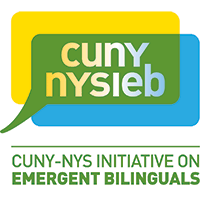CUNY-NYSIEB Ambassador: Michelle Demeroukas
(TESOL CERTIFIED ENL TEACHER)Meet Michelle….
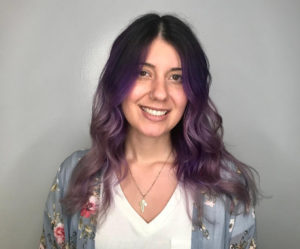 Michelle Demeroukas has been teaching at the Morris Academy for Collaborative Studies for five years. Along with her role teaching English as a New Language (ENL) courses, Michelle co-teaches courses such as English Language Arts, Global History Prep, and Participation in Government and Economics. She focuses on reciprocal teaching in her classroom, positioning herself as a language learner along with her students. Michelle aims to make her classroom “a safe place to practice, and learn, and make mistakes, and do all those things that you need to do as part of the process of learning a new language.”
Michelle Demeroukas has been teaching at the Morris Academy for Collaborative Studies for five years. Along with her role teaching English as a New Language (ENL) courses, Michelle co-teaches courses such as English Language Arts, Global History Prep, and Participation in Government and Economics. She focuses on reciprocal teaching in her classroom, positioning herself as a language learner along with her students. Michelle aims to make her classroom “a safe place to practice, and learn, and make mistakes, and do all those things that you need to do as part of the process of learning a new language.”
Take a Peek in Michelle’s Classroom
Fast Facts
- School: Morris Academy for Collaborative Studies is located in the South Bronx
- Type of Classroom: Grades 9-12
- Model: Approximately 400 students, 25 percent of whom are designated as either MLL/ELL or former MLL/ELL
- Languages spoken: Spanish (the majority of her ENL students) as well as Fulani, Mandinka, Garifuna, French, and Susu
In this video, Michelle describes her stance as an ENL teacher.
Curriculum Overview
Each year, Michelle partners with the Student Press Initiative (SPI) through the Center for Professional Education of Teachers at Columbia University. Students in her ENL class draft, revise, and edit their own personal narratives, which are ultimately published in a book released by SPI. In this video, Michelle describes how she frames the curriculum to her students. The curriculum is outlined below:
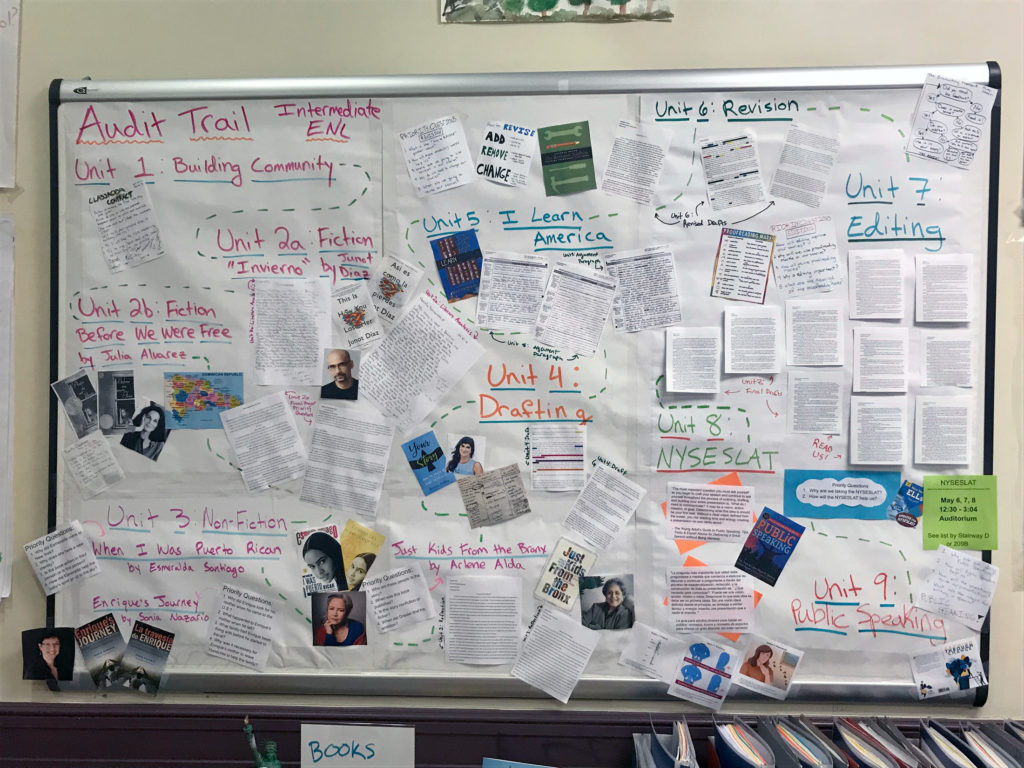
Selecting Mentor Texts: Michelle chose books that reflected the diversity of her student population and included examples of translanguaging.

Analyzing Mentor Texts: As they read, Michelle and her students develop a list of reasons why authors translanguage. She was inspired by Gladys Aponte’s work with elementary students.
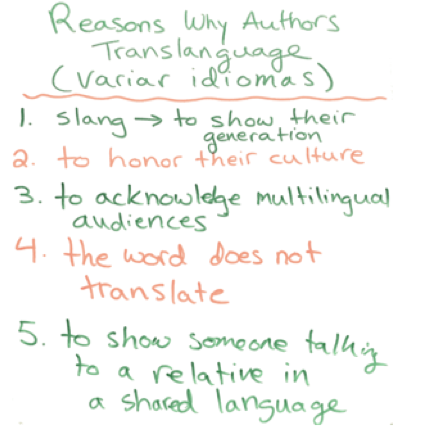
Drafting Their Personal Narratives: In the initial phase of writing, students brainstorm topics, create storyboards, and then draft without worrying about grammar, spelling, etc. Throughout this stage, students are encouraged to draw on their full linguistic repertoires, using whatever language(s) they feel most comfortable with.
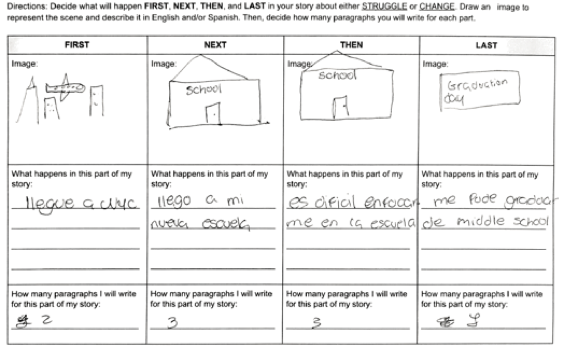
Providing Feedback: Students receive feedback from both Michelle and their classmates on their work. Because all of Michelle’s students understand Spanish this year, they are encouraged to provide feedback in their language(s) of their choice.

Revising Their Narratives: Students finalize their narratives by incorporating feedback and including intentional translanguaging, using the list of reasons they developed during their analysis of mentor texts. Their texts are primarily in English, because their final audience for the publication will be a predominantly English-speaking audience.
Practicing for Author Readings: In preparation for their public readings, students practice reading aloud. They first annotate their texts, noting the pacing and inflection they want to include in each section. Then, they practice reading in pairs and then to the class.
Lesson Snapshot
This lesson includes students sharing their narratives in pairs. They read aloud to one another and then provide feedback on the pacing, volume, and inflection of the reading.
Classroom Strategies
Michelle’s classroom strategies emerge from her commitment to positioning her students as aspiring authors.
Reading as Writers – from the beginning of the year, Michelle positions her students as writers who read books to understand how other authors make choices about language and style.
Student Mentor Texts – Along with the book-length mentor texts the students read early in the year, Michelle also includes writing samples from previous students. Current students analyze these texts for author choices and effects. Students are positioned as intentional and thoughtful authors worthy of analysis.
Drafting and Revising – Because students create multiple drafts of their pieces, they are encouraged to draw on their full linguistic repertoires during the initial phase of writing. Then, they refine their piece for an English-dominant audience before publication. Michelle encourages students to understand their linguistic choices as dependent on author, purpose, and audience.
Providing Feedback – Students provide feedback to one another, working in the language(s) of their choice. Michelle facilitates this feedback by providing specific prompts or questions students may want to pose to one another. Students are continuously provided opportunities to provide their analysis and suggestions of each other’s texts; they are positioned as knowledgeable and important readers of each other’s works.
Text Annotation – Throughout the feedback process, and as they consider how they want to read their pieces aloud, students continually annotate their own and each other’s texts. They draw on their full linguistic repertoires and often employ symbols (happy face, check mark, etc.) to communicate their ideas about their own and each other’s writing.
Family Engagement – Students bring their narratives home and read them to a family member of their choice. Family members complete a brief survey about the piece, sharing their thoughts and feedback.
Michelle Reflects
In this final video, Michelle reflects on the power of translanguaging in the ENL classroom.
